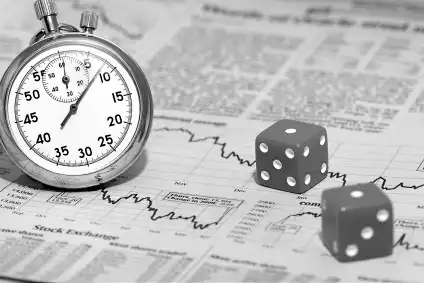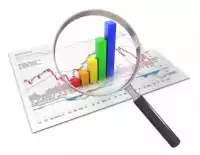Decoding the trader’s toolkit: Analyzing techniques, tools, and trends
September 27, 2023 Updated October 4, 2023
This article will delve into the essential techniques, tools, and trends that traders employ to decode market movements and seize opportunities.
Technical analysis: Unveiling price patterns
Technical analysis is a cornerstone of the trader's toolkit, studying historical price and volume data to forecast future price movements. Traders analyze charts, identify patterns, and employ a range of technical indicators to make informed trading decisions.
One commonly used technique in technical analysis is identifying support and resistance levels. Support levels are price points where an asset stops declining and might reverse. On the other hand, resistance levels are price points where an asset often halts its upward movement. These levels help traders pinpoint potential entry and exit points, enhancing the precision of their trades.
Candlestick patterns are another vital component of technical analysis. These patterns provide insights into market sentiment and price trends. For example, a "doji" candlestick indicates uncertainty in the market, while a "bullish engulfing" pattern suggests a potential reversal from a downtrend to an uptrend. By decoding these patterns, traders gain a deeper understanding of market dynamics and can tailor their strategies accordingly.
Fundamental analysis: Digging into the numbers
Fundamental analysis is a technique that involves evaluating a company's financial health, economic indicators, and industry trends to determine its intrinsic value. This approach is commonly used in stock trading to identify assets that are potentially undervalued or overvalued.
City Traders Imperium traders who employ fundamental analysis delve into financial statements, earnings reports, and economic data to assess a company's performance. They also consider macroeconomic factors, such as interest rates and inflation, that can impact the broader market. By analyzing qualitative and quantitative information, traders aim to make informed decisions about the prospects of the asset in question.
The dividend yield is a fundamental metric that traders often analyze. This metric measures the annual dividend income an investor can expect relative to the asset's price. Traders may seek stocks with a high dividend yield to indicate potential value. However, balancing this with other factors is essential, as a high dividend yield could also signify financial distress.
Algorithmic trading: Leveraging technology
In the digital age, technology has revolutionized the trading landscape, giving rise to algorithmic trading. This technique uses computer algorithms to execute trades based on predetermined criteria, market conditions, and complex mathematical models.
Algorithmic trading offers several advantages, including speed, precision, and the ability to execute trades around the clock. Traders can backtest their algorithms using historical data to fine-tune their strategies before deploying them in live markets. This approach eliminates emotional biases and ensures that trades are executed consistently according to predefined parameters.
High-frequency trading (HFT) is a subset of algorithmic trading involving executing many microseconds. HFT relies on cutting-edge technology and ultra-fast data feeds to capture minor price discrepancies. While HFT can offer rapid profits, it also requires robust risk management strategies to mitigate potential losses.
Sentiment analysis: Gauging market psychology
Sentiment analysis is an emerging technique that aims to gauge market psychology and investor sentiment by analyzing social media, news, and other sources of information. Traders use sentiment analysis to gain insights into the prevailing market sentiment and potential price movements.
Natural language processing algorithms are employed to scan news articles, tweets, and online discussions related to financial markets. Positive or negative sentiments expressed in these sources can indicate how investors feel about a particular asset or market. Traders can then integrate this information into their decision-making process.
While sentiment analysis offers valuable insights, it's important to note that emotions can fickle and influence market sentiment. Successful traders approach sentiment analysis as one of many tools in their toolkit, using it to supplement their technical and fundamental analyses.
To sum things up
Decoding the trader's toolkit involves harnessing various techniques, tools, and trends to navigate the complexities of financial markets. Whether it's technical analysis, fundamental analysis, algorithmic trading, or sentiment analysis, each component plays a role in the trader's decision-making process.
Successful traders adopt a holistic approach, combining these techniques to form a comprehensive view of the markets. They recognize that no single tool or strategy is a guaranteed recipe for success; instead, these tools' synergy enables them to make well-informed and calculated trading decisions.
As you explore the techniques, tools, and trends in the trader's toolkit, remember that the effectiveness of these tools lies in their application. The context of market conditions, risk management, and individual expertise all contribute to successfully using these tools. By embracing a multifaceted approach and continually refining your skills, you can confidently navigate the complexities of trading, decoding the intricate language of the markets and seizing opportunities along the way.









